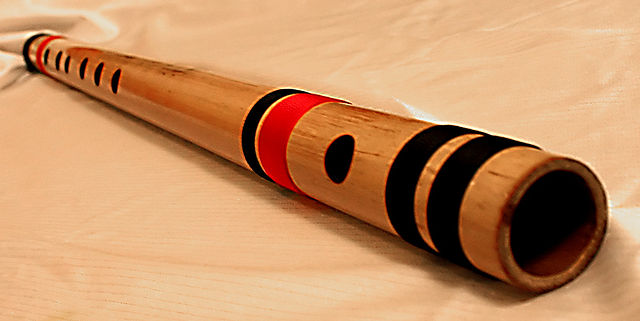Pandit Pannalal Ghosh, also known as Amal Jyoti Ghosh, was an Indian flute (bansuri) player and composer. He was a disciple of Allauddin Khan, and is credited with popularizing the flute as a concert instrument in Hindustani classical music and also the "Pioneer of Indian Classical Flute".
Ghosh performing at All India Radio
Flutes of Ghosh kept in a bag with his name embroidered on the top flap. Collection of Raja Dinkar Kelkar Museum, Pune.
A bansuri is an ancient side-blown bamboo flute originating from the Indian subcontinent. It is an aerophone produced from bamboo and metal like material used in many Nepali Lok songs. A bansuri is traditionally made from a single hollow shaft of bamboo with seven finger holes. Some modern designs come in ivory, fiberglass and various metals. The six hole instrument covers two and a half octaves of music. The bansuri is typically between 30 centimetres (12 in) and 75 centimetres (30 in) in length, and the thickness of a human thumb. One end is closed, and few centimeters from the closed end is its blow hole. Longer bansuris feature deeper tones and lower pitches. The traditional design features no mechanical keys, and the musician creates the notes they want by covering and uncovering the various finger holes.
A 23-inch-long bansuri bamboo flute for concerts.
Krishna with a bansuri is sometimes referred to as Venugopal.
All scales of Bansuris in a set
Bansuri is traditionally made from bamboo.






